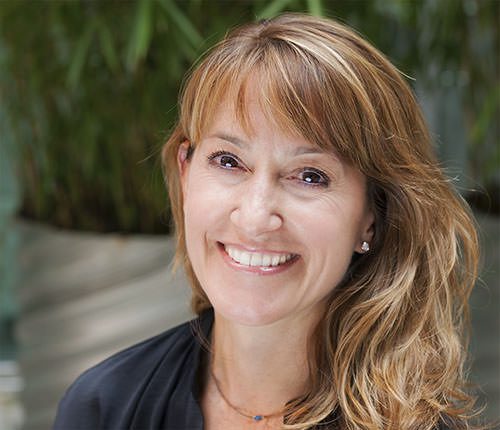By Stephanie Farrell
For the past four years, Associate Stephanie Farrell has been a member of the North Lot team, an affordable housing project in northern Beacon Hill, currently overseeing its construction administration. Passionate about Seattle’s housing crisis, she actively volunteers with the BLOCK Project and Plymouth Housing. She’s also an active member in WT’s internal EDI group.
ULI Panel looks to the North Lot Project to Understand the Challenges and Rewards
The Urban Land Institute’s (ULI) Young Leaders Group recently hosted a panel on the North Lot project that showcased how collaboration between nonprofits, public bodies, and elected officials can turn intricate affordable housing projects into reality. In attendance were numerous community members, including developers and architects, who were eager to understand how to facilitate much-needed affordable housing in Seattle. Representing Weber Thompson on the panel, I was joined by Jamie Lee of Seattle Chinatown and International District Preservation and Development Authority (SCIDpda), Joel Ing from Edge Developers, and Miguel Maestas of El Centro de la Raza.
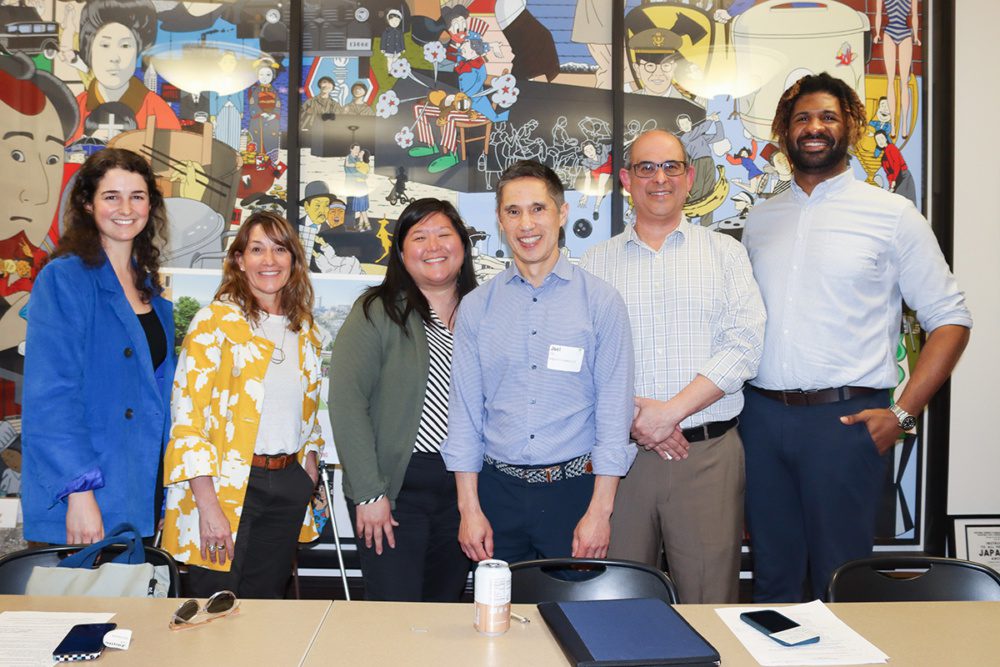
ULI Young Leaders panel from left: Caroline Herre (Enterprise Community Partners), Stephanie Farrell, Jamie Lee, Joel Ing, Miguel Maestas, and David Baker (Homestead Community Land Trust)
It was an eye-opening discussion, and although I’ve been on the project for almost four years, I realized there was a lot to learn about the obstacles ownership faced in executing the deal. Panel moderator, Daniel Baker, asked questions that clarified the development and funding challenges while also sharing how partnerships, persistence, and a little luck, allowed North Lot to successfully break ground in October 2022.
Below are some of the key takeaways from the panel that illustrate what it took to make North Lot a reality.
Beginning with the site’s history
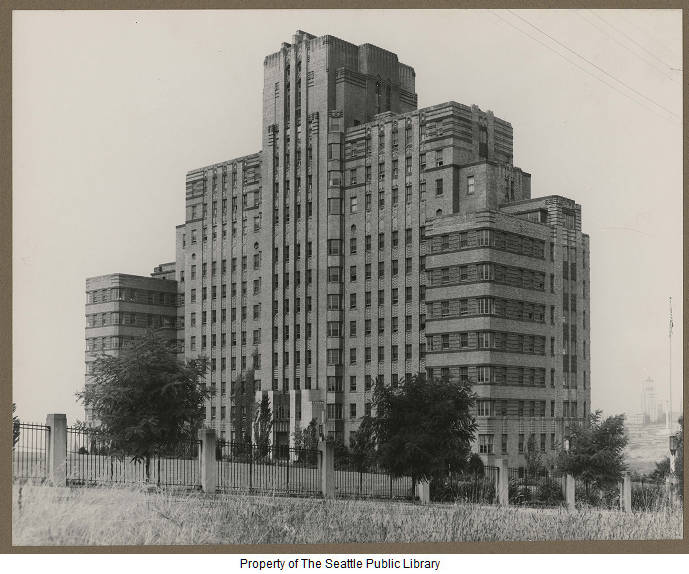
The Pacific Medical Tower as a Marine Hospital in 1932. (Photo courtesy The Seattle Public Library)
Understanding the complexity of North Lot begins with some history about its provenance. The North Beacon Hill property was previously owned by Pacific Hospital Preservation and Development Authority (PHPDA), the PDA that owns the neighboring iconic Art Deco-style Pacific Tower. The Landmarked Tower was built in 1933 as a U.S. Marine Hospital and has a long history of serving the community. In 1981, control transferred to the City of Seattle, leading to the creation of PHPDA to preserve the historic property and operate it in service of a broader community health mission.
How did SCIDPDA decide on the site?
The Tower’s campus included 9.5 beautifully landscaped acres, except for two parcels north of the Tower that contained a large surface parking lot. Recognizing the critical role of affordable housing in supporting community health, PHPDA saw a chance to offer intergenerational housing and community health services by redeveloping these underutilized parcels. In 2016, they worked with owners representative Barrientos RYAN to develop the property known as “North Lot,” and that’s when Weber Thompson’s involvement began.
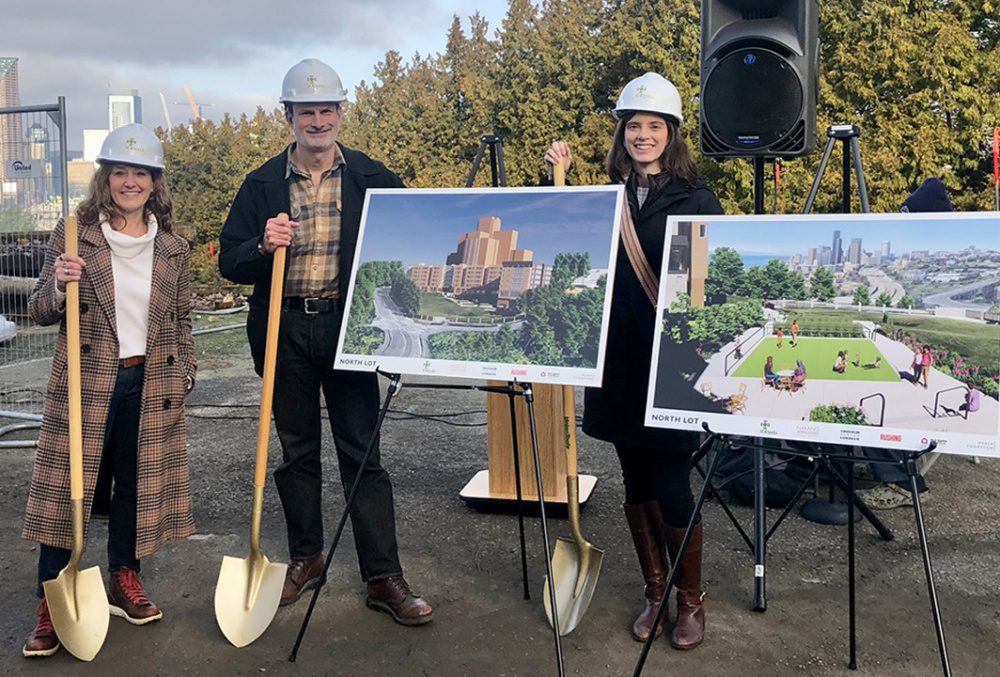
Weber Thompson North Lot team members from left: Associate Stephanie Farrell, Senior Principal Jeff Reibman, and Associate Maggie Carson.
Weber Thompson partnered with Urban Designers from Northwest Studio to obtain the Master Use Permit (MUP) entitlement. SCIDpda then joined as the affordable housing developer, as the clear alignment in mission between the two PDAs made for an ideal partnership in developing the property. Furthermore, the site’s proximity to the International District and Beacon Hill communities that SCIDpda already served fit perfectly into their mission to “preserve, promote, and develop the Chinatown International District as a vibrant community and unique ethnic neighborhood.” This synergy between the two PDAs ultimately provided SCIDpda with the opportunity to develop the site.
Partnerships: Challenges and opportunities?
SCIDpda’s Jamie Lee explained that their initial challenge was securing financing due to a lack of sizable, completed affordable housing developments. Fortunately, they partnered with Edge Developers who had the necessary funding expertise and credentials. Edge Principal, Joel Ing, shared that while they offered development consulting knowledge, they also firmly believed in SCIDpda and the project’s importance. As a result, they agreed to co-guarantee the debt and equity associated with the financing, while SCIDpda retained full project ownership.
Notably, SCIDpda recently received TCO for Yesler Family Housing, so they will have two large affordable housing projects to their credit when North Lot is completed.
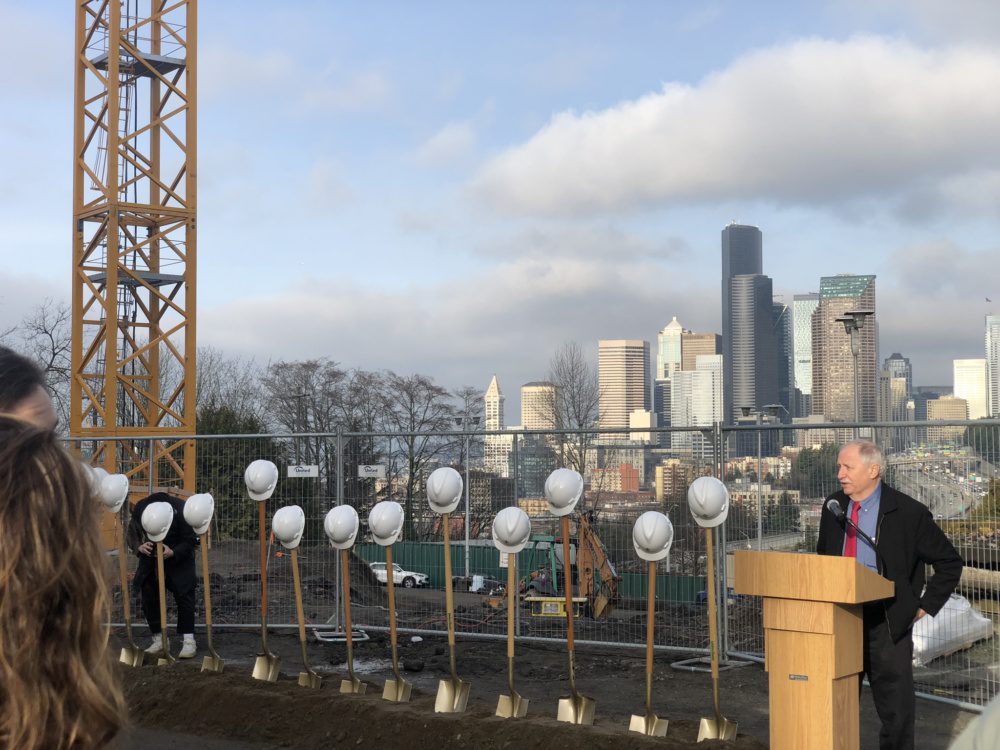
Representative Frank Chopp speaking at the North Lot groundbreaking ceremony in January 2023.
Representative Frank Chopp, another important project partner, tirelessly advocated for the affordable housing project that would be built in the shadow of his workplace. In his speech at the North Lot Groundbreaking, he celebrated the project not only for the housing and services it will provide for the community, but also as a fitting reparation by Washington State to the International District community—a community that was profoundly affected by the division and displacement by the I-90 and I-5 freeways. The provision of affordable housing on this beautiful site aims to alleviate some of that displacement and pave the way for additional projects of its type.
The development is further enhanced by two significant commercial nonprofit tenants providing a full suite of supportive services. One-third of the ground level will host a 10,000 square foot facility for the Jose Marti Child Development Center, leased and operated by El Centro de la Raza. The other two-thirds will house a program for All-Inclusive Care for the Elderly (PACE), managed by International Community Health Services. As Miguel Maestas explained, this partnership allows El Centro de la Raza to relocate some operations to Beacon Hill, continuing to offer vital services to the community’s low-income families.
SCIDpda aims for residents to reap the benefits of having childcare, healthcare, and community services just steps away from their apartments. The intergenerational demographics shaped several aspects of the architectural design. Childcare licensing required much of the site’s central courtyard to be a dedicated playground. Weber Thompson and the landscape architect, Nakano Associates, had to pivot from the original garden design to a play-centric one. This shift became an opportunity, allowing residents to use the playgrounds after hours and elders at the adult care facility to enjoy the lively sounds and sights of children at play. The presence of both children and the elderly also influenced design decisions around material use, acoustics, and circulation logistics.
Unique approaches to financing
Joel remarked that North Lot was the most complex deal he’d ever executed. The process from when SCIDpda and Edge joined the project to financial closure took 5 1/2 years. The $120M project’s financing came from thirteen different sources—twelve public and one private. The project also secured funds from city and state levels, with low-income tax credits playing a crucial role in the funding matrix.
In addition to the complex funding network, the project had to navigate the COVID era, with spiking interest rates and inflation almost grounding the project. Having a committed funding team helped, but ultimately, it was Jamie’s last-minute call to Amazon’s Housing Equity Fund that saved the day. The project aligned with Amazon’s initiative to provide financial assets to address disparities in communities where its rapid growth has widened the economic gap. To Jamie’s surprise, they agreed relatively quickly and easily to assist with North Lot’s funding gap. Joel highlighted SCIDpda’s modesty, stating that their organization contributing millions of their own funds to the closing was remarkable and a testament to their commitment.
One additional point our panel made was the link between funding (and energy targets) and unit count. Family units, despite being much needed, don’t look as attractive on paper as they provide fewer units per square foot. This can pose challenges when potential success is gauged by unit count. North Lot is a strong argument for rethinking that metric.
Final comments: Policy and the future?
The panel agreed that several elements are critical to the successful development of affordable housing. First and foremost is the upcoming $970M Housing Levy, set for a vote in Seattle this November. This funding directly impacts projects like North Lot. Additionally, SDCI’s Administrative Design Review, a streamlined process for affordable housing projects, saved significant time and money in North Lot’s permitting process. Initiated during COVID as a response to the affordable housing crisis, we all hope this pilot program continues.
Exceptions from required wage scales and reductions in impact and permit fees could also help with the challenges of developing affordable housing. With a strong history of affordable housing developers in Seattle, and no sign of this trend slowing down, the panel remained optimistic about the future efforts in this sector, despite the challenges.
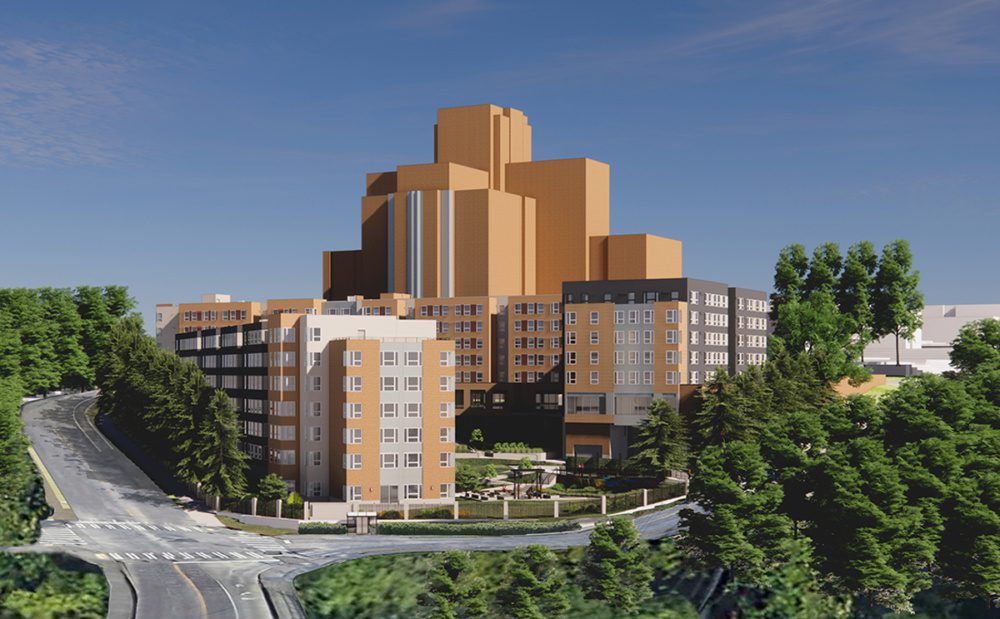
70% of the 160 units at North Lot will be restricted to tenants with incomes at 50% AMI, with the remaining 30% with incomes at 60% AMI.
North Lot Building A is currently under construction and is the first of two buildings planned on the site. 70% of the 160 units will be restricted to tenants with incomes at 50% AMI, with the remaining 30% with incomes at 60% AMI. Building B, still to be funded, would add another 115 units to the project. Our panel concluded that with passion, persistence, and creativity, more projects like this can happen.
Affordable housing is a problem that Seattle has the power to solve.
